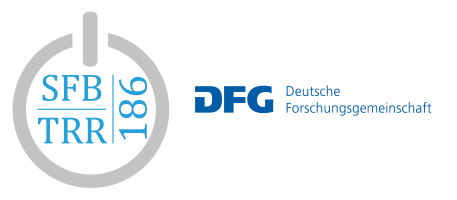Control of immediate early splicing through core components of the spliceosome.
Alternative splicing increases the genome’s coding capacity and allows fast changes in gene expression
independent of altered de novo transcription. In this project, we investigate how cells can quickly respond to
external stimuli via splicing switches, i.e. transcriptome-wide adjustments in their alternative splicing programs.
We have demonstrated a quick and transient change in the alternative splicing program upon T cell activation,
which we refer to as an immediate early splicing (IES) switch. This IES switch depends on transient
phosphorylation of one isoform of the RNA binding protein hnRNPC (hnRNPC2) through the MEK/ERK
pathway, and is rendered cell type-specific by the additional involvement of PKCtheta, which is expressed only
in selected tissues. This IES switch mainly affects components of the translation machinery, suggesting that it
is involved in controlling de novo protein synthesis immediately after T cell activation. We have also expanded
our investigation of splicing switches to other stimuli, in particular to changes in temperature, and have started
to investigate how molecular switches that drive the splicing process help to shape splicing switches. In the
upcoming funding period, we will further delineate the molecular mechanisms underlying the hnRNPCdependent
IES switch in T cells, among others by addressing the contribution of splicing factor U2AF1, and
consolidate the concept of IES switches by expanding to other cell types and stimuli. U2AF1 emerged as a
highly interesting player in the hnRNPC-dependent IES switch, as we find it transiently phosphorylated upon
T cell activation similar to hnRNPC2, and as it is essential for the splicing process by directly binding the AG
dinucleotide at the 3’-splice site. Mutations that affect the RNA-binding domains of U2AF1 lead to mis-splicing
and are found in various tumors, underlining its importance for correct splice site selection. We suggest that
transient phosphorylation of U2AF1 alters its RNA affinity and/or specificity, acting together with hnRNPC to
implement the IES switch upon T cell activation. In addition, we will use small-molecule splicing inhibitors that
target different components of the spliceosome to investigate, at which steps of the splicing process specific
alternative splicing decisions are made to shape splicing switches. In the latter context, we will continue our
long-term efforts to develop small-molecule modulators for the spliceosomal molecular switch, BRR2, for the
further investigation of splicing switches and other functional aspects of splicing. We will pursue the above
goals by using, among others, transcriptome-wide RNA sequencing, in vitro RNA-protein interaction and
crosslinking studies, minigene assays and structure analysis. Our project contributes to the overarching goal
of this initiative to elucidate molecular mechanisms of cellular switches in gene expression, and how specific
molecular switches are involved in shaping such gene expression switches depending on diverse external
stimuli.
Prof. Dr. Florian Heyd (FU Berlin)
Prof. Dr. Markus Wahl (FU Berlin)
